The Year of the Monarch
In the light of the moon a little egg lay on a leaf.
One Sunday morning the warm sun came up—and pop!—out of the egg came a tiny and very hungry caterpillar.
—Eric Carle
I was visiting my parents’ home, grateful for a few weeks of support as I cared for my firstborn. The aroma of a meal being cooked by my mother and grandmother wafted in the background, mingling with their warmth and care. My son, barely two months old, was nestled against me on the living room couch as I read aloud from Eric Carle’s classic children’s book, The Very Hungry Caterpillar.
My father walked by, then stopped in front of me, puzzled. “I don’t think he can understand you, dear.”
I looked down at the baby, his face slackening as he drifted to sleep. Though my father was likely correct, I still felt that it was a worthwhile endeavor, that my little one was somehow absorbing Carle’s gentle words.
Those words certainly became embedded in my own consciousness, as I read the story over and over and over again to my son and then to his brother that followed him. Decades later, I can still recite them by heart—even the caterpillar’s entire delectable Saturday night binge.
***
Some years ago, I served as a grant director at an education fund for K-12 teachers wishing to add service-learning projects to their curricula. One of the most memorable grant applications came from a high school teacher who wished to create a monarch butterfly waystation in a community park.
With the funding, biology students germinated seeds and planted flowers to attract monarch butterflies and provide them a safe area to feed and breed during their annual migration through Indiana. The students also set up informational signs for the public, boundary posts, and tracking procedures.
What a wonderful and hands-on way to learn about the life cycle of the monarch and to build up its habitat, I thought. To this day, photos of those students’ planting efforts hang on the wall of my study.
I’m sorry to say it was the first time monarch butterflies entered my awareness in more than a passing way. That changed markedly when a friend dropped off a chrysalis to our home and I spent time learning about the multi-generational migratory path of the creature pupating in front of me, as well as the intricate orientation mechanism guiding it (or more specifically, its progeny) 2,500 miles back to the very same tree its ancestors occupied while over-wintering in Mexico.
But my interest remained academic until that little monarch was released back to the world. After it had gone, I imagined it flying into unfriendly territory, struggling through stormy weather and manmade impediments in order to complete the next leg of its journey. I imagined it searching and searching for a safe place to lay its eggs and launch the next generation.
It was during a trip to the Santa Cruz and Pacific Grove migratory grounds in California, however, that I felt a significant shift within me vis-à-vis monarch butterflies and their existential plight. Witnessing swarms of monarchs clumped together on eucalyptus trees, shimmering in the light and wind, took my breath away. (Incidentally, I’ve been delighted to learn that a butterfly swarm is also known as a kaleidoscope.)
It was one thing to read that the monarch butterfly population is at an extinction tipping point, that its numbers have decreased by 90% since the 1980s. It was another thing to stand still and take in the beauty and delicacy and utter fragility of an entire species. Watching them cling together in the trees, I couldn’t help but feel . . . responsible for their survival.
***
As Eric Carle indicated in his book, a caterpillar is nothing if not rapacious, and its primary job upon emergence from its egg is to eat as much as possible, in as short a time as possible. However, unlike Carle’s fictional caterpillar, who ate through multiple fruits and an impressive array of junk foods, real (monarch) caterpillars have a single food source: milkweed.
Not only do caterpillars rely on that milkweed as their sole source of nourishment, but adult monarchs also lay their eggs on milkweed plants after mating. Due to land development and the use of weed killers, though, milkweed is rapidly disappearing from the United States. As their habitat disappears, so do the monarchs.
I was invited to join a milkweed planting session in the neighboring town of Zionsville, whose mayor Emily Styron has taken the National Wildlife Federation’s Mayors’ Monarch Pledge. This program, launched in 2015, gathered pledges from over 600 mayors and heads of local governments to restore the habitat of the monarch butterfly through a variety of projects and campaigns across the country.
I felt elated to participate in planting, instead of my usual on-the-sidelines donating, researching, writing, photographing. But that morning, the session was canceled due to air quality concerns from Canada’s massive wildfire.
It took me some time to regain my bearings after that cancellation. Is there a clearer example of the inherent connection between all living beings than the air we breathe? After all, a fire thousands of miles away was now preventing the citizenry of a small Indiana town from simply stepping outside. The lesson felt visceral to me: we must act with our connectedness in mind, and quickly.
***
A few days later, I learned that Tweetspeak’s powers-that-be have declared this to be the Year of the Monarch. And as Poet Laura, I wanted to do my part.
As I made plans to plant milkweed in my own yard, though, a grander picture formed in my mind—of monarchs traveling from one Tweetspeak reader’s home to the next, all along their migratory path.
The mathematician and meteorologist Edward Norton Lorenz first coined the chaos theory term, “butterfly effect,” referring to the way a minute incident can disrupt a major weather system. The example he used was that of a butterfly flapping its wings in Brazil, leading to a chain of events that eventually produces a tornado in Texas.
Many have extrapolated from this scientific concept to general culture, proposing that minor occurrences can dramatically affect the big picture, and perhaps more meaningfully, that our small actions can have significant positive outcomes.
I propose we create our own (literal and figurative) butterfly effect!
Won’t you join me? (And my project partner Laura Boggess 🙂 )
If you’d like to participate in Tweetspeak’s “Year of the Monarch” project:
1. Share your Tweetspeak Pollinator Pledge by typing into the comment box below.
I, ____________ [name], of ____________ [location], pledge to add milkweed to my yard to help rebuild the habitat of the magnificent monarch.
2. Plant milkweed that is best-suited for your geographic region.
For most of the U.S., the fall season is considered an ideal time to plant milkweed. See the resources after this post to identify the type of milkweed ideal for your geographic area, and to find seed sources and planting instructions. You can also plant some types of milkweed as full-sized perennials in the summer!
If you are interested in a larger school or a community project in conjunction with a local park, SaveOurMonarchs.org/schools provides guidance.
3. Share your words for a crowd-sourced poem!
This is Tweetspeak Poetry, so we simply love to fuse our work with poetry! Before or after you plant your milkweed, please send us either a sentence or a line of poetry to follow the words, “Dear Seed.”
Here’s mine:
Dear Seed, let your boundaries dissolve, and welcome soil, water, light—welcome Earth, welcome life.
Using the responses, a Tweetspeak poet will craft a crowd-sourced poem about our planting efforts and our hopes for the monarch butterfly. (This idea comes from Kwame Alexander, NPR’s Poet-in-Residence, who created a poem called Love, Me from hundreds of letters written by NPR listeners.)
4. Consider Getting Some Conversation Starters
We asked artist Sara Barkat to create some conversation starters for you and your community—in the form of T-shirts, totes, mugs, postcards, and more. Enjoy the beauty, and get the conversation going.
butterfly weed, pictured here, is a form of milkweed!
Eric Carle passed away in 2021, at the age of 91. I recently learned that his family had returned to Germany from the U.S. shortly before World War II, and he endured beatings, shootings, and abject hunger during those years.
After art school, in his 20s, Carle moved back to the U.S. to work as a graphic designer and then as an illustrator and writer. He became well-known for his brightly-colored books on nature and animals, the most famous of which became a part of my own family’s history and memories.
Did my two-month-old grasp anything I read to him from The Very Hungry Caterpillar on that summer day long ago, as we sat cradled in that four-generation household? Perhaps not. But I like to think that over time, he internalized Carle’s message—that one day, he, too, would emerge from the safety of home and soar with beauty and grace through the world.
I think Carle had a larger message embedded in his cheerful manuscript: though our actions may be small and slight as butterfly eggs, we must take them. We must do what’s needed for the wellbeing of the world and then trust the next generation to do the same. As Carle stated, “I think it is a book of hope.”
With that in mind, let’s ring in the Year of the Monarch!
Poetry Prompt: Dear Seed or Poem of Waiting
Share your line for “Dear Seed,” once you pledge to plant milkweed. And/or, while you wait, write a “poem of waiting,” from the point of view of either a monarch or a flower. We sometimes feature your poems if they’re a fit!
Year of the Monarch Resources
Downloadable & Shareable ‘Year of the Monarch’ Project Description
Milkweed planting in most of continental US and eastern Canada
Milkweed Planting in the western U.S.
Photo by Peter Lam CH on Unsplash. Post by Dheepa Maturi.
- Morphing: Lessons from the Year of the Monarch - October 23, 2024
- Year of the Monarch: Butterfly Kisses—A Romantic Comedy - August 7, 2024
- Year of the Monarch: In Sync — a Communal Poem for the Monarch Butterfly - April 11, 2024
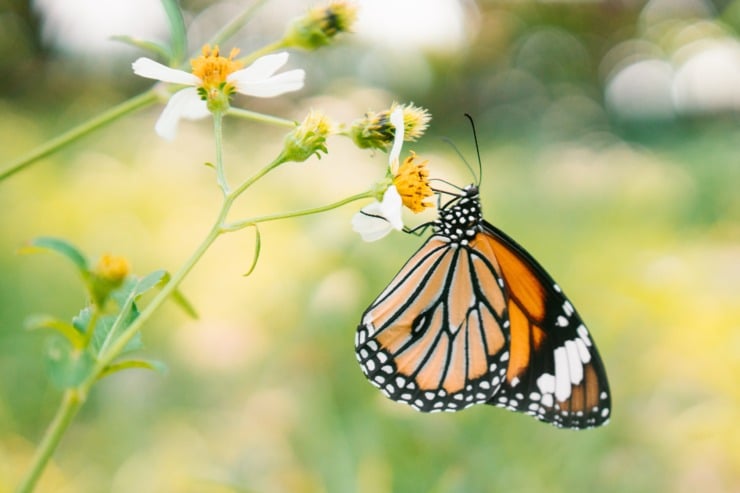
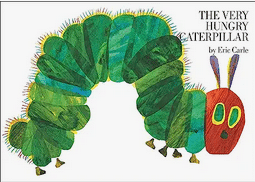
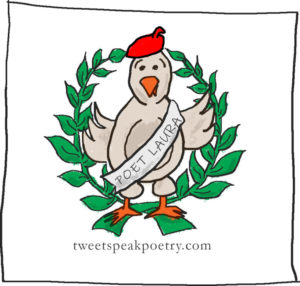
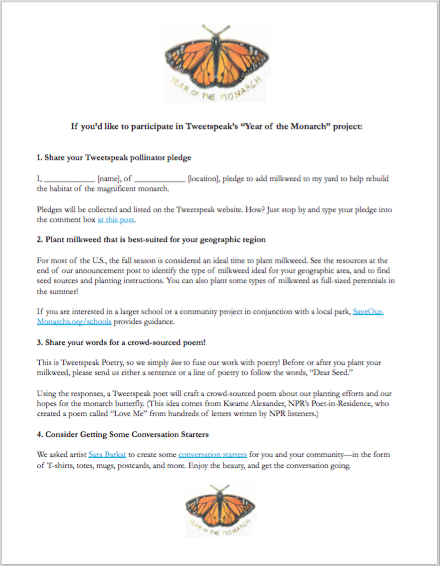
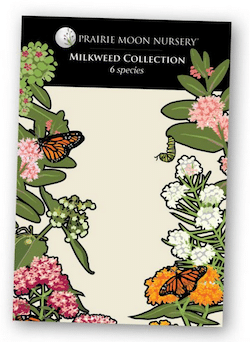

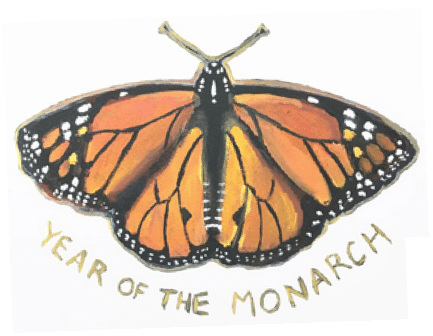
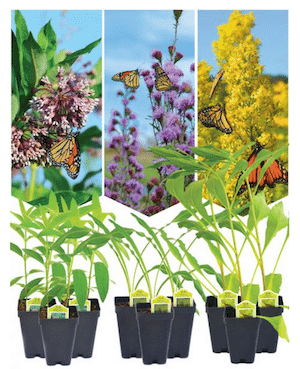
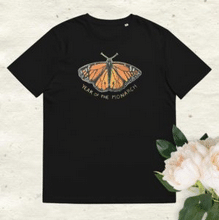
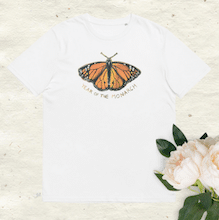
L.L. Barkat says
Dheepa (and Laura Boggess! :), I am so thrilled about this project. It feels both simple and powerful. Thank you both for leading the way.
And, Dheepa, I loved your story about the Eric Carle book. I read picture books to my newborns, too. And I know it built something deep and important within them.
I, Laura Barkat, of southern New York by the Hudson River with the big pine in her very small back yard, pledge to add milkweed (specifically “Butterfly Weed,” which is so beautiful in its tangerine brilliance), to my yard to help rebuild the habitat of the magnificent monarch.
I’ll be back another day with my poetry line. 🙂
Dheepa R. Maturi says
I am visualizing that big beautiful pine surrounded by the tangerine of butterfly weed and the carrot-cantaloupe of multiple monarchs! Kaleidoscopes within a kaleidoscope!
Sharmen Oswald says
I, Sharmen Oswald, of the small town of Leesville, South Carolina, pledge to add milkweed to my yard (specifically the back part where we plant our garden and had bees until colony collapse ended them) to help rebuild the habitat of the magnificent monarch.
Dear Seed, burst forth knowing that within you is sustaining life that can feed other life.
L.L. Barkat says
Sharmen, the thought of you bringing life for the monarch in the place where colony collapse occurred for your bees feels so poignant to me. That’s a poem in itself. I would love to see a picture of your garden! 🙂
laura boggess says
Yay, Sharmen! I’m so glad you’ve decided to join us in celebrating our Monarch friends. I agree with Laura Barkat, what a lovely way to redeem the sad loss of your bees. Life that can feed other life, indeed.
Dheepa R. Maturi says
Sharmen, welcome to the Year of the Monarch and thank you so much for pledging! Given the colony collapse you witnessed, this such a beautiful gesture and action on your part. And I love the line of poetry you’ve shared!
Katie Spivey Brewster says
The “One Journey. One Story at a Time” video was so calming and captivating.
I Katie Brewster of Pomfret, MD pledge to add milkweed to my yard to help rebuild habitat for monarch butterflies.
Absolutely LOVE that a swarm of butterflies is also called kaleidoscope!
L.L. Barkat says
I thought so, too, Katie. So mesmerizing!
And now I’ve got a butterfly kaleidoscope turning in my mind…
(Do you know which milkweed you’d like to plant? It was news to me that there was more than one kind! 🙂 )
Laura Boggess says
Welcome to our Year of the Monarch project, Katie! I’m so glad you’ve made your pledge. I have some “wild” common milkweed growing up in my flower garden that I am tending. Every day I’ve been looking for the Monarch caterpillars. I’ll keep you posted :).
Dheepa R. Maturi says
Katie, thank you so much! Wishing you a kaleidoscope of butterflies in Pomfret, MD!
L.L. Barkat says
I just want to thank Dheepa and Laura for how gently inspiring they are. (We had a *beautiful* meeting on Zoom this morning to talk more about this exciting project!)
Personally, I can’t wait for the garden party. 🙂 (More on that, later.)
And I’m still thinking about my poetry line (or lines), after just buying some Butterfly Weed. (Pic here, of the tiny bloom I spirited away with hopes that others will replace it! 🙂 ) https://www.flickr.com/photos/110769643@N07/53115989342/in/dateposted-public/
Dheepa R. Maturi says
It was my favorite kind of discussion–full of stories and ideas and fun! It’s going to be a wonderful–and kaleidoscopic–journey!
Angela Bordio says
Dear Dheepa, thanks for an amazing blog. Literally anyone can choose something to learn from it. Grateful that I have found you.
Dheepa R. Maturi says
Angela, welcome to Tweetspeak–so happy that this article and the Year of the Monarch resonated with you! There’s a lot more coming on this topic, so please do check back in!
Susan Mulder says
I, Susan Mulder, of western Michigan, tucked away in the woods on my hidden plot of land, pledge to add milkweed to my yard to help rebuild the habitat of the magnificent monarch.
Currently I have butterfly weed and echinacia sharing a pot on my deck. They will find their forever home in a border this fall to give them a chance to establish and hide from the deer. I’ve also discovered a milkweed sprout that has been granted protected status!
Dear seed,
Sleep the sleep of hope, to wake and reach for that sunrise of the year called Spring.
Dheepa R. Maturi says
Dear Susan, thank you for your wonderful pledge–I love all the plans that you have in the works! Would you share more about the sprout with protected status? Is that through a local ordinance, or something larger? What sort of sprout is it?
And your line of poetry–divine!
Susan says
Thank you for your kind words about the little line. As for the protected status, there is a large predator in my area, my husband, who is fond of mowing edges and less tended spots! When one small plant staked its claim in a corner, under threat of no hot meals, he decided it was wise to leave it alone. Besides, he was outnumbered when you count the two volunteer sedum on either side!
Susan says
(it’s a native milkweed btw)
Dheepa R. Maturi says
Lol, you won’t believe it, but there’s a similar predator in my garden! Glad to know they can be cajoled into good behavior by withholding food–appreciate the tip! 🙂